Trends come and go. We’re sure everyone’s aware of that. It’s unlikely that you look or dress the same as you did twenty years ago, in much the same way that cars aren’t designed in the same way, and houses aren’t designed in the same way.
Things change. It might be a slow process but everything we know is constantly evolving – and it’s all because of consumer behaviour.
It’s the classic chicken and the egg scenario. Is consumer behaviour changing because of the influence of brands and technology, or are brands and technology changing because of consumer behaviour?
All we know is that it’s a constant cat-and-mouse game of giving consumers what they want – all while creating things that they will grow to want.
WHY MUST BRANDS EVOLVE?
While new products and services are provided by businesses to stay relevant, brands constantly have to evolve to reflect that. Even brands that appear to have stood the test of time (Lego, Pepsi, and Starbucks) have all evolved to some description to stay relevant and stay on top of the competition and alter their messaging to stay ahead of the curve in terms of understanding and shaping consumer behaviour.
Let’s take Lego as an example. What started as a very simple concept for a children’s toy has quickly spiralled into something a whole lot bigger. The core values and principles of the brand: creativity, imagination, learning, fun and quality – have stayed the same. It’s Lego’s ability to understand consumer behaviour and shape its messaging to effectively enter new markets that has allowed it to become the powerhouse that it is today.

IT’S A SUBTLE EVOLUTION
At no point has Lego lost sight of what the brand really means. At no point has the brand moved away from its core consumer base. Through slow and methodical brand evolution, Lego has been able to retain all of its existing customers, turn many of them into evangelists and attract peripheral audiences and beyond.
Even the logo has remained almost unchanged since the early 1970’s – with only some very minor legibility changes.
The important thing to understand here is that, at the risk of sounding clichéd – the brand really does come from the heart. When a brand is completely and unquestionably genuine from the core, brand evolution shouldn’t feel like an uphill struggle.
DEALING WITH MINUTIA
It can be all too easy to get caught up in the micro-politics of entering new markets or attracting business from the periphery of an existing audience. The seemingly endless questions of whether to create a new sub-brand or whether a move might alienate your existing customers.
Put bluntly, these types of questions are born from a lack of understanding of what your business really means and to whom.
Let’s take Lego as an example again. Bringing out a hugely successful string of blockbuster movies probably seems like an obvious development now it’s happened – but when Lego was just building blocks for children, who could have predicted it?
Launching 9 hugely successful theme parks across the globe seems to make perfect sense and complete on-brand – but would it have seemed like a dream when the brand was first coined?
IT’S ALL AT THE CORE
It all stems back to the core values of creativity, imagination, learning, fun and quality. Lego’s customers, employees and directors all share these values. Lego has created a culture around these shared values in its never ending quest to evolve its brand into more and more territories.
There’s a good reason why it’s now considered as the world’s most powerful brand.
So what does this mean for your business? It probably sounds like you’re a bit late to the party – right?
Well it isn’t too late. As the title describes, this is an evolutionary process. There’s no reason why you can’t slowly or even completely U-turn your brand to better re-align your values. It’s amazing how many questions this process answers. It’s then just a case of maintaining the evolutionary process and identifying new opportunities.


